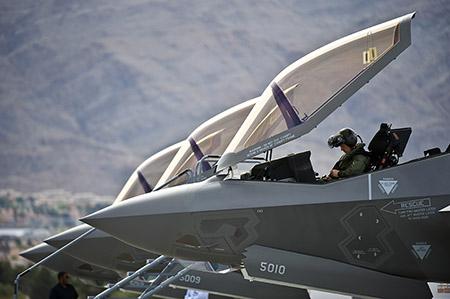We will have everything ready by the 30th of June - Martin reiterated - we are finalizing the last ALIS configuration (Autonomic Logistics Information System) and will be implemented in a couple of days. Our customers have never had any doubts about the future of the Joint Strike Fighter - the general manager of the F-35 program reiterated - the one seen a few months ago is a totally different fighter than the one we are going to deliver, with specific measures made under the profile hardware and software.
The Operational Readiness Inspection or Final Operational Readiness Survey, which will take place at the Marine Corps Air Station in Yuma, Arizona, will establish the F-35 with an Initial Operating Capacity in service. The 'Ori' will begin next July 1st and will last for fourteen days.
The inspection will focus on 134 specific factors of the hunt. The final report will be given to the commander of the Marine Corps, Lieutenant General Jon Davis, who has the last word. Although it is not for a single body to certify the Initial Operational Capacity of a weapon system, the Marine have no intention of adopting a machine that can not meet their requirements. In fact, for the Pentagon, the JSF could already enter service.
If the outcome of the inspection matches the needs of the Marine, the F-35B will enter into service (and in the history of aviation) the next 15 July with Initial Operating Capacity. The aircraft could go into battle with 'reduced' equipment: AIM-120 AMRAAM missiles, GBU-12 and GBU-39 bombs. Unlike the V-22 Osprey that the Marines deployed in Iraq immediately after the 'IOC', the F-35 will not go to war with the Islamic State.
If the F-35 passes the inspection, it will enter into service with the "Green Knights" of the Marine Fighter Squadron 121. The first squadron of the VMFA-121 will then be transferred to the Iwakuni base in Japan, in January of the 2017, to respond to possible crises in the Region.
In the last few hours, however, some rumors have leaked from Paris regarding the F-35's software integrations. It would appear that additions to the 3F Block would be "slipping" into the 4 Block, with delivery slipping from the 2019 to the 2025. If so, the F-35 could use the cannon only in the 2025.
The F-35 will use the GAU-22 / A gun, capable of firing 3.300 rounds per minute, but which will carry 220 ammunition with it. The connection code between the mainframe of the aircraft and the cannon has not yet been written, while its implementation has always been fixed to the release of the Block 3F, foreseen in the 2019.
On balance, if this delay is confirmed, the F-35 will be the first fighter in the world to use the cannon ten years after its entry into service.
These rumors have been denied by Lockheed. The 3F Block - they say from the company - is currently being integrated and tested, the code has already been written, all the deadlines will be respected.
The development strategy of the JSF program, is based on the implementation of software that from time to time increase the capabilities of the platform. To date, funds have been allocated for the final Block-4.
The F-35 that will fly in the 2040 will be equipped with the Block-7. The 1A / 1B Block includes the 78 percent of the source code needed for the F-35 Initial Operational Capabilities by providing software for training and primary interaction between the various major systems.
The Block-2A is the software currently "loaded" on the F-35 fleet. Increases the general capabilities of the pilot training aircraft including off-board fusion capabilities, initial data links, electronic countermeasures and improved debrief. With the 2A block, 86 is provided per cent of the code needed to achieve the Initial Operational Capacity. The Marine Corps with the F-35B should reach the Initial Operational Capability by the next 15th of July with the 2B software block.
The 2B bestows Close Air Support with the possibility of launching AMRAAM (Advanced Medium Range Air to Air Missile), JDAM (Joint Direct Attack Munition) and GBU-12 (laser-guided aerial bomb). The Air Force plans to achieve the Initial Operational Capability with the F-35A in the 2016 with the next iteration of the software, called 3i.
Described as a technical update of the Block-2B, the 3i will allow the aircraft to use JDAM, GBU-12 and AMRAAM. The F-35A will have substantial air support capabilities only in the 2018, when it reaches Full Operational Capability. Only in the 2019 (except for sensational delays), the F-35A can fire with the internal cannon and release a series of ammunition including AIM-9X, AMRAAM, GBU-12, GBU-31 and Small Diameter Bomb II.
Block 3F software will provide 100 percent of the fighter's 'Warfighting' capabilities, with full integration of all external systems. Block 3F was written, according to the latest information from Lockheed, and is being tested. The SDB-II system will be integrated with Block-4a software.
The 4 Block will be divided into two segments. The Block-4a will be ready between the 2021 and the 2022, while the 4B for the 2023. The twelve million dollars to write the Block-4 have been included in the 2014 budget. Much of the development of the Block-4 will be dedicated to countermeasures against existing enemy air defense systems and those that will arise in future years.
Franco Iacch
(photo: US Air Force)












